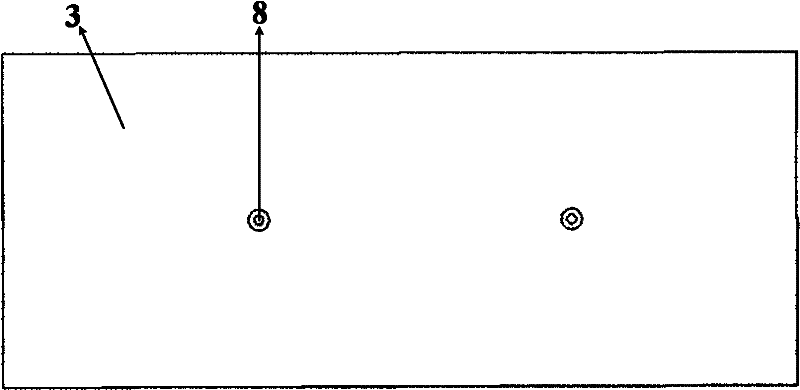Antenna for reducing radar scattering cross section
A radar cross-section and antenna technology, applied in antenna coupling, antenna grounding device, radiation element structure, etc., can solve the problems of high technical content of structural RAM, increased volume, weight and cost, and unstable shrinkage performance. Achieve the effects of weakening mutual coupling strength, simple structure, and easy processing
- Summary
- Abstract
- Description
- Claims
- Application Information
AI Technical Summary
Problems solved by technology
Method used
Image
Examples
Embodiment Construction
[0029] refer to figure 1 and figure 2 , the existing two microstrip patch antennas working at 8.2GHz are composed of a dielectric board 1, two microstrip radiating units 2 and a grounding board 3. The dielectric board 1 uses double-sided copper clad laminates, and the microstrip radiating unit 2 is located on the dielectric board The ground plate 3 is located on the lower surface of the dielectric plate, the flange plate of the SMA head is welded on the ground plate 3, and each microstrip radiation unit 2 has a via hole 8 penetrating the dielectric plate 1, and the inner core of the SMA head Weld the via hole on the microstrip radiating unit to feed the antenna.
[0030] The invention is right figure 1 and figure 2 The antenna shown is modified in that a high-impedance surface structure is used to reduce its radar cross-section.
[0031] refer to image 3 and Figure 4 , the present invention comprises: a dielectric board 1, two microstrip radiation units 2, a groundin...
PUM
 Login to View More
Login to View More Abstract
Description
Claims
Application Information
 Login to View More
Login to View More - R&D
- Intellectual Property
- Life Sciences
- Materials
- Tech Scout
- Unparalleled Data Quality
- Higher Quality Content
- 60% Fewer Hallucinations
Browse by: Latest US Patents, China's latest patents, Technical Efficacy Thesaurus, Application Domain, Technology Topic, Popular Technical Reports.
© 2025 PatSnap. All rights reserved.Legal|Privacy policy|Modern Slavery Act Transparency Statement|Sitemap|About US| Contact US: help@patsnap.com



